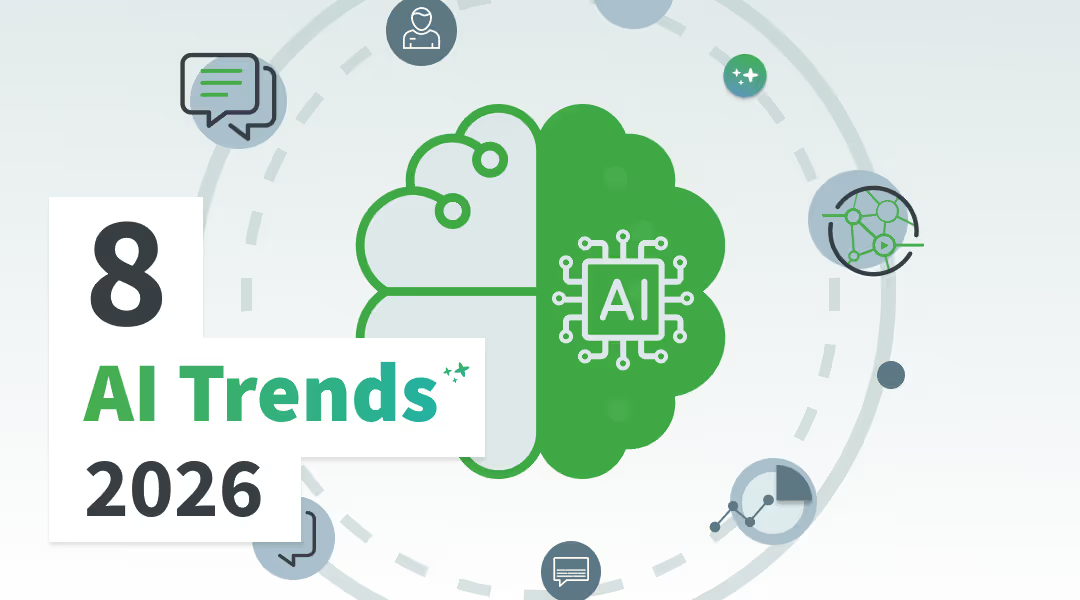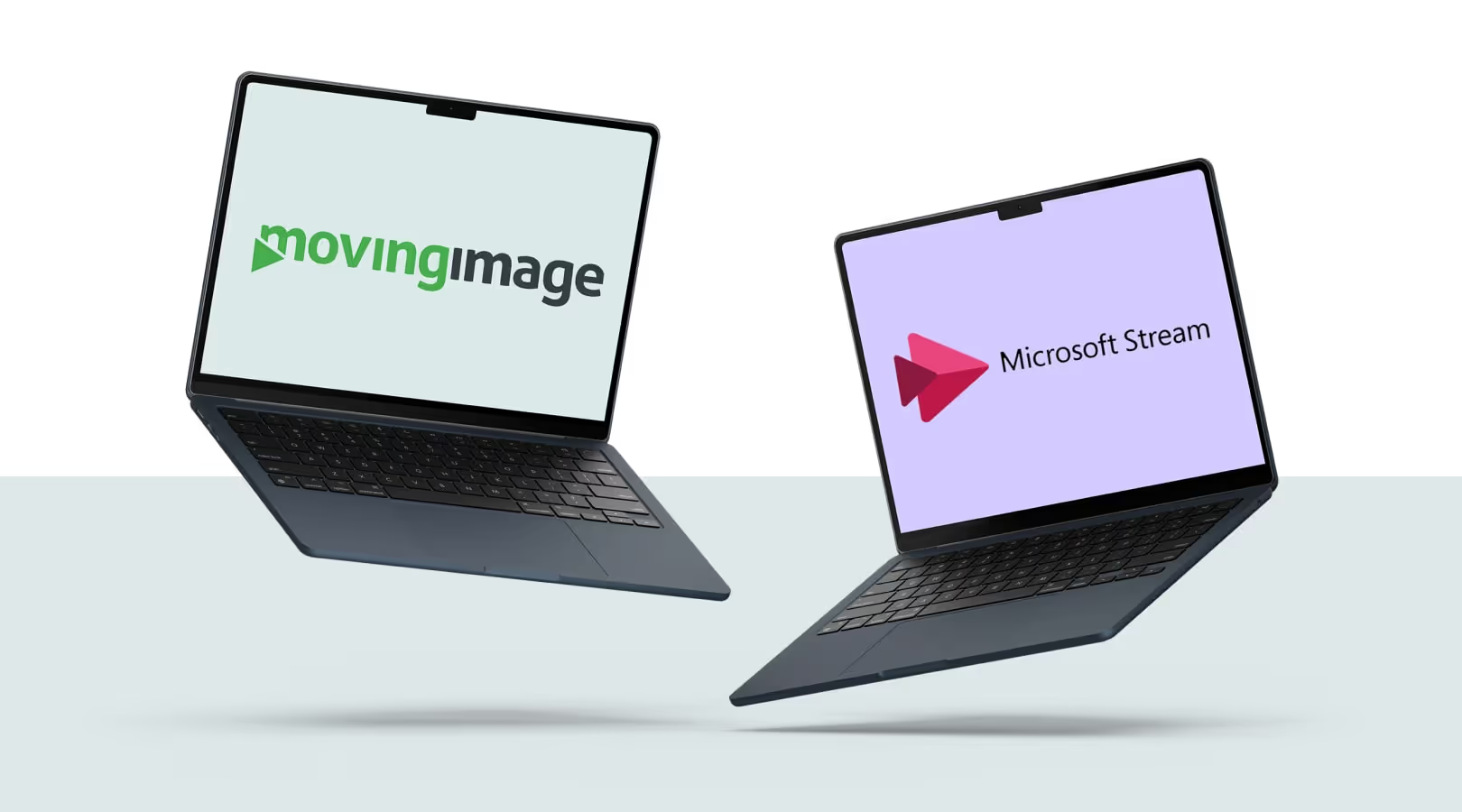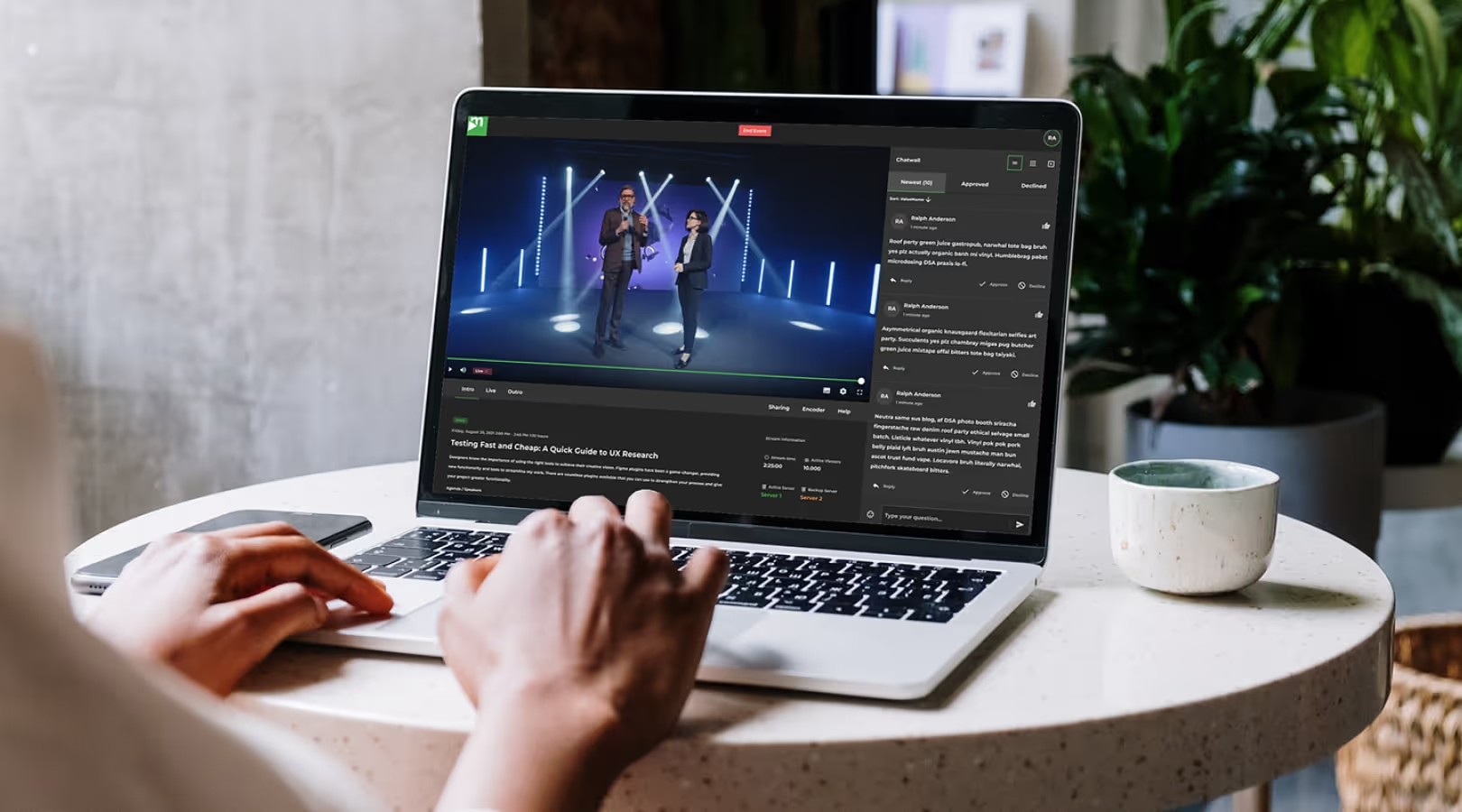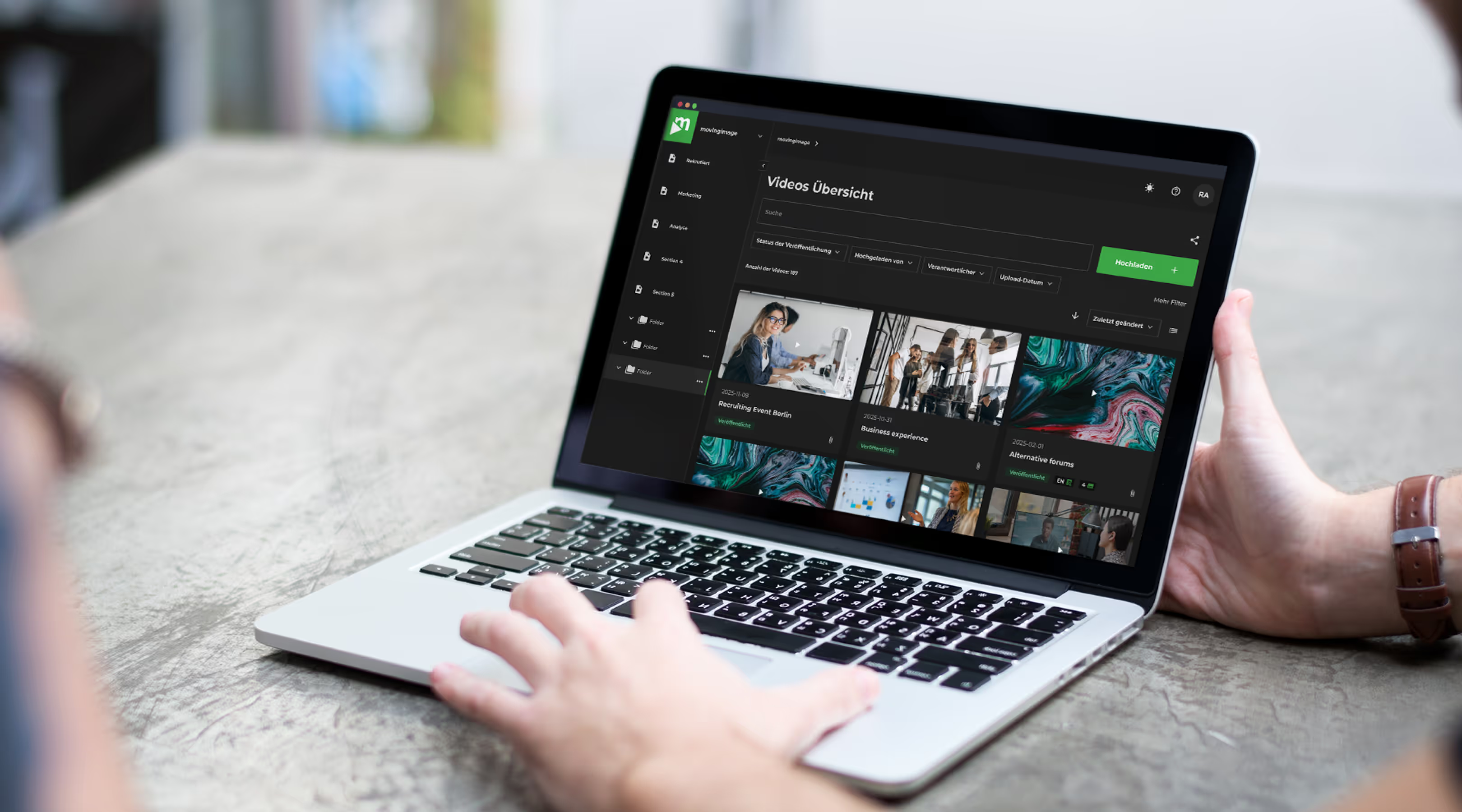Using video in HR – more successful, more flexible, more human

Driving your success with video

Using video in HR – more successful, more flexible, more human
Video usage has been booming for years, and according to a recent study by ARD and ZDF, that trend has continued. Viewing habits and platform choices may vary by age group, but one thing is clear: there’s no generation that isn’t open to video. That makes it a powerful tool for modern HR teams.
Video puts a human face on recruiting
Digitalization has made recruiting faster — but also more standardized. Job ads are published on career platforms and business networks, where one listing often sounds a lot like the next. And if all goes well, candidates are funneled into a fairly formal application process.
But where’s the spark? How can companies set themselves apart from the competition when everything looks and feels the same? And how can candidates get a true sense of what a company stands for — its values, its goals, its culture?
This is where video shines. One of its biggest strengths is its emotional impact — and that’s just as true in recruiting. In a video, real employees can introduce the company and welcome potential team members, sharing insights into daily tasks and what it’s like to work there. Video gives your employer brand a face — and a voice.
And it works beyond traditional job ads, too. For example, Marc Hammer, Director and Headhunter at division one, has seen excellent results using video in direct outreach. At the Corporate Video Summit, he shared that his response rate doubled when he approached candidates with personalized videos. You can watch his full talk here.
Better onboarding with video

The first weeks at a new job are critical. New hires come in with expectations — and if those aren’t met early on, top talent may walk out the door. Good onboarding needs to cover a range of topics, such as:
- Getting familiar with internal processes (from ordering equipment to reporting sick leave)
- Introducing company locations, operations, and workflows
- Sharing company policies and core values
- Presenting departments and teams
- Communicating IT, security, and compliance guidelines
- Training for the new role and responsibilities
Traditionally, all of this lives in a corporate handbook — not exactly the most engaging format. Videos, on the other hand, are faster, more engaging, and more memorable. A welcome video featuring team members and company values is a great starting point. Operational workflows are also much easier to explain on screen. And when hosted on a platform, these videos can be accessed anytime, anywhere — perfect for refreshing knowledge later on.
If you’re onboarding larger groups, such as production or logistics teams, video is a real time-saver. It allows you to clearly communicate quality standards, safety procedures, and technical instructions — and preserve that knowledge across the organization. For non-desk workers especially, video delivers unmatched value: information becomes easily and reliably accessible, no matter where they are. The motto here is: “show, don’t tell.”
Videos are particularly powerful when real colleagues appear on camera, sharing their daily work experiences. This adds authenticity and strengthens your employer brand. Just be sure to break content down into short, manageable segments. Onboarding videos aren’t meant to be feature-length films.
Using video to build 1:1 connections
Employee directories are still often based on rigid org charts. They may list names, titles, and email addresses — but not much else. Why not take it a step further?
A searchable(!) video directory where employees briefly introduce themselves can make a huge difference, especially for new team members. These clips don’t have to be perfectly produced. What matters is authenticity — and maybe a mention of personal interests alongside role-related info. That creates conversation starters and connection points.
Store, manage, and measure video efficiently
A professional video management platform helps HR teams make the most of video without the usual technical hassle. It saves time and offers key advantages:
- Reliable playback in high quality – Videos are automatically optimized for the user’s device. That’s especially useful for non-desk environments, where technical setups can vary widely.
- Centralized management – All video assets live in one place, are searchable, and can be grouped and reused as needed.
- Access control and permissions – Define exactly who can view what, whether it’s internal staff or external audiences.
- Built-in analytics – Platforms often include metrics and KPIs that help HR understand how videos are being received and where there’s room to improve.
Virtual career events: creating connection through video
Virtual and hybrid career events are on the rise — and video plays a central role in bringing them to life. In the past, companies might host a traditional “open house” with all the usual challenges of scheduling and travel. Today, the doors open digitally.
That means every candidate can attend — regardless of location, and with far more flexibility. Whether you want to offer insights into different departments or facilitate real-time conversations with the recruiting team, the format is wide open. Your creativity sets the boundaries.
Want to see for yourself how virtual events can build real connections? Request a trial for our Virtual Events solution!
When used right, video is a versatile and powerful tool for HR — from recruiting and onboarding to employer branding and e-learning. It’s emotional, easy to consume, and gives your organization a human touch.
With the right video management software, it’s also easy to implement. And of course, compliance — including GDPR — should always be part of the setup.
Our Speakers
Video usage has been booming for years, and according to a recent study by ARD and ZDF, that trend has continued. Viewing habits and platform choices may vary by age group, but one thing is clear: there’s no generation that isn’t open to video. That makes it a powerful tool for modern HR teams.
Video puts a human face on recruiting
Digitalization has made recruiting faster — but also more standardized. Job ads are published on career platforms and business networks, where one listing often sounds a lot like the next. And if all goes well, candidates are funneled into a fairly formal application process.
But where’s the spark? How can companies set themselves apart from the competition when everything looks and feels the same? And how can candidates get a true sense of what a company stands for — its values, its goals, its culture?
This is where video shines. One of its biggest strengths is its emotional impact — and that’s just as true in recruiting. In a video, real employees can introduce the company and welcome potential team members, sharing insights into daily tasks and what it’s like to work there. Video gives your employer brand a face — and a voice.
And it works beyond traditional job ads, too. For example, Marc Hammer, Director and Headhunter at division one, has seen excellent results using video in direct outreach. At the Corporate Video Summit, he shared that his response rate doubled when he approached candidates with personalized videos. You can watch his full talk here.
Better onboarding with video

The first weeks at a new job are critical. New hires come in with expectations — and if those aren’t met early on, top talent may walk out the door. Good onboarding needs to cover a range of topics, such as:
- Getting familiar with internal processes (from ordering equipment to reporting sick leave)
- Introducing company locations, operations, and workflows
- Sharing company policies and core values
- Presenting departments and teams
- Communicating IT, security, and compliance guidelines
- Training for the new role and responsibilities
Traditionally, all of this lives in a corporate handbook — not exactly the most engaging format. Videos, on the other hand, are faster, more engaging, and more memorable. A welcome video featuring team members and company values is a great starting point. Operational workflows are also much easier to explain on screen. And when hosted on a platform, these videos can be accessed anytime, anywhere — perfect for refreshing knowledge later on.
If you’re onboarding larger groups, such as production or logistics teams, video is a real time-saver. It allows you to clearly communicate quality standards, safety procedures, and technical instructions — and preserve that knowledge across the organization. For non-desk workers especially, video delivers unmatched value: information becomes easily and reliably accessible, no matter where they are. The motto here is: “show, don’t tell.”
Videos are particularly powerful when real colleagues appear on camera, sharing their daily work experiences. This adds authenticity and strengthens your employer brand. Just be sure to break content down into short, manageable segments. Onboarding videos aren’t meant to be feature-length films.
Using video to build 1:1 connections
Employee directories are still often based on rigid org charts. They may list names, titles, and email addresses — but not much else. Why not take it a step further?
A searchable(!) video directory where employees briefly introduce themselves can make a huge difference, especially for new team members. These clips don’t have to be perfectly produced. What matters is authenticity — and maybe a mention of personal interests alongside role-related info. That creates conversation starters and connection points.
Store, manage, and measure video efficiently
A professional video management platform helps HR teams make the most of video without the usual technical hassle. It saves time and offers key advantages:
- Reliable playback in high quality – Videos are automatically optimized for the user’s device. That’s especially useful for non-desk environments, where technical setups can vary widely.
- Centralized management – All video assets live in one place, are searchable, and can be grouped and reused as needed.
- Access control and permissions – Define exactly who can view what, whether it’s internal staff or external audiences.
- Built-in analytics – Platforms often include metrics and KPIs that help HR understand how videos are being received and where there’s room to improve.
Virtual career events: creating connection through video
Virtual and hybrid career events are on the rise — and video plays a central role in bringing them to life. In the past, companies might host a traditional “open house” with all the usual challenges of scheduling and travel. Today, the doors open digitally.
That means every candidate can attend — regardless of location, and with far more flexibility. Whether you want to offer insights into different departments or facilitate real-time conversations with the recruiting team, the format is wide open. Your creativity sets the boundaries.
Want to see for yourself how virtual events can build real connections? Request a trial for our Virtual Events solution!
When used right, video is a versatile and powerful tool for HR — from recruiting and onboarding to employer branding and e-learning. It’s emotional, easy to consume, and gives your organization a human touch.
With the right video management software, it’s also easy to implement. And of course, compliance — including GDPR — should always be part of the setup.



.avif)


.avif)






.avif)





